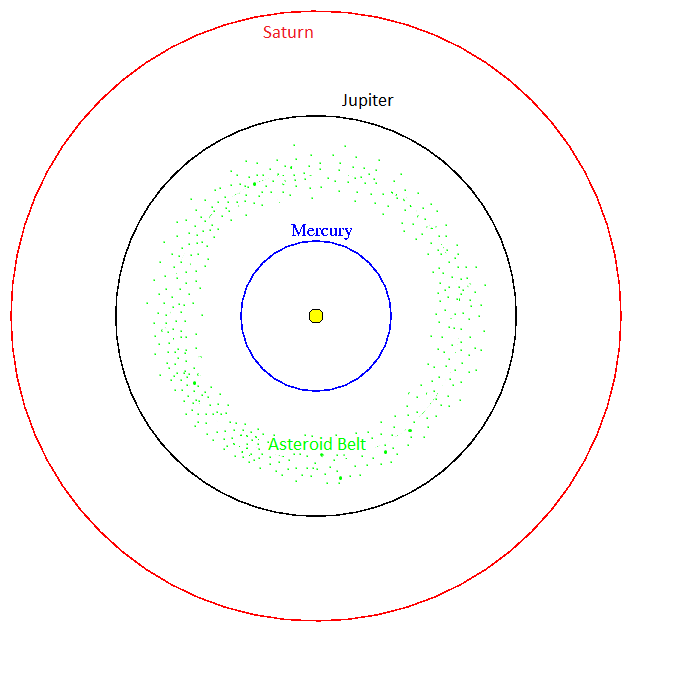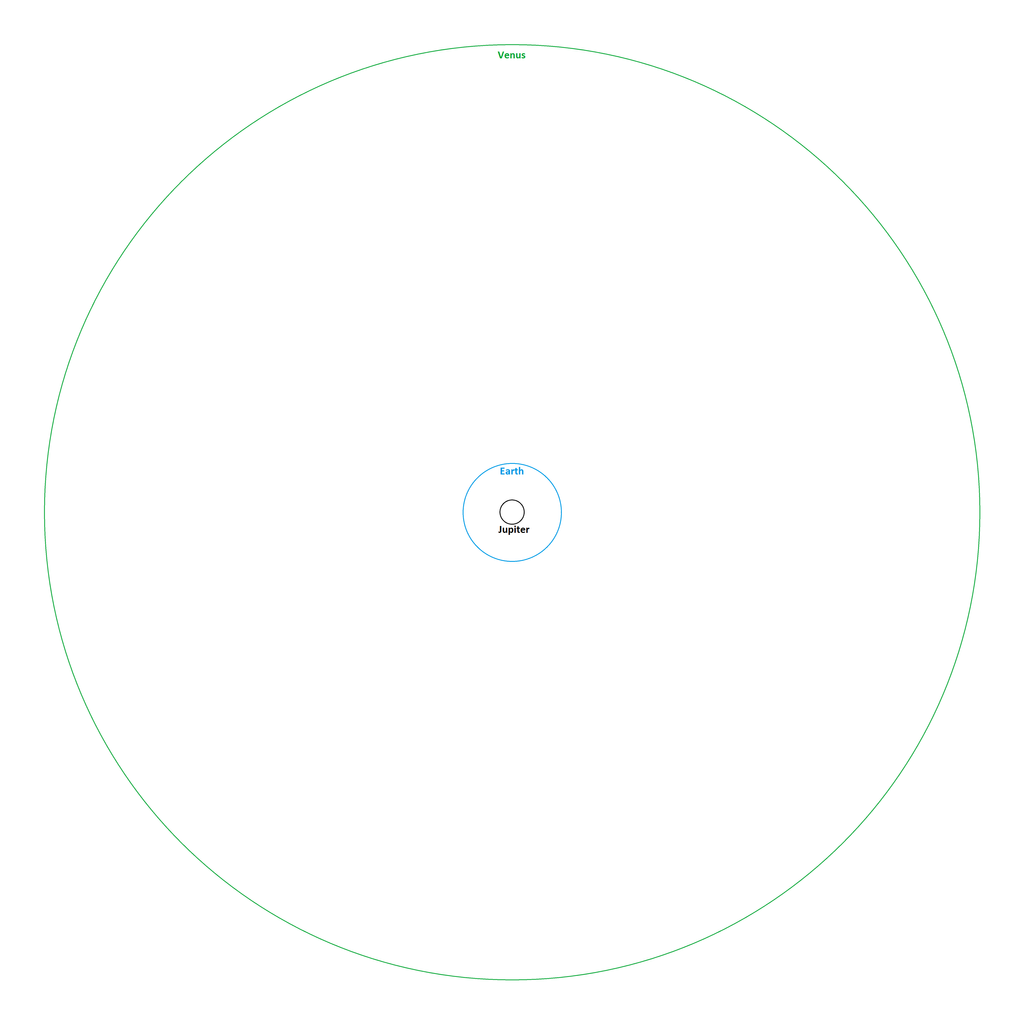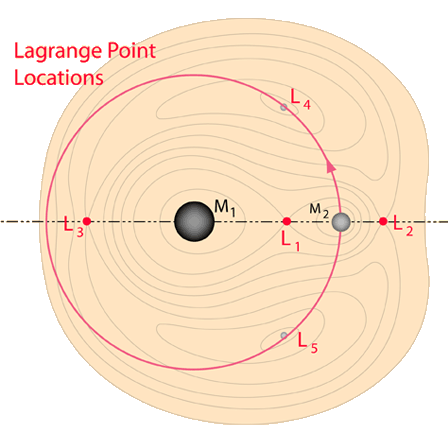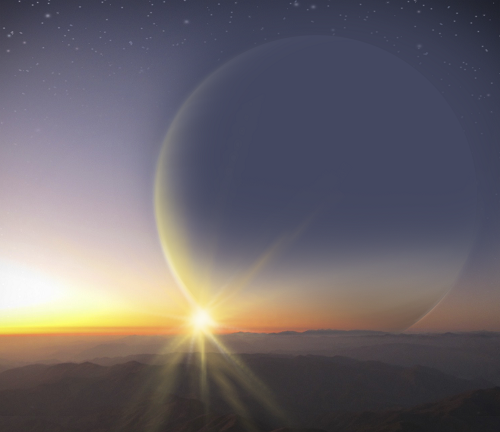New Mars Forums
You are not logged in.
- Topics: Active | Unanswered
Announcement
#1 2016-05-13 11:13:09
- Tom Kalbfus
- Banned
- Registered: 2006-08-16
- Posts: 4,401
Earth Sized Moons
Suppose our Solar System looked like this:
Distances from Sun
Mercury 57,910,000 km
Asteroid Belt 70,000,000 km to 130,000,000 km
Jupiter 149,597,870 km
Saturn 227,940,000 km
Uranus 778,330,000 km
Neptune 1,429,400,000 km
Orbit Period years
Mercury 0.24085
Asteroid Belt 0.4 to 0.8
Jupiter 1.000
Saturn 1.8809
Uranus 11.8626
Neptune 29.458
Distances from Jupiter
Earth 287,816 km
Venus 2,741,800 km
Orbit Period (Both moons are tidally locked with Jupiter thus day length = orbit period almost)
Earth 23.9345 hours
Venus 29.322 days (same as a lunar orbital period)

Also the inclination of both orbits around Jupiter are 23.45˚ to the ecliptic, so both worlds experience the same seasons as Jupiter orbits the Sun.
Lets say Jupiter is visible at points west of 20˚ west and east of 160 degrees east.
Jupiter is 41.135 times as big as our Moon, and Jupiter is 0.749 times as far away so Jupiter appears 54.92 times as big as the Moon in the sky of the Western Hemisphere.
Now just imagine humans and human civilization developed on this planet, the "Moon" appears smaller, and has different features including weather, we see oceans and continents on that moon. The "Moon" as far as the Europeans are concerned is Venus, they've never seen Jupiter, until someone ventures to make an Atlantic crossing. Venus is 3.482 times the size of our Moon, but its 7.133 times as far away so Venus would appear 0.488 as large as our Moon.
Now imagine we're launching our first satellites. What problems do you think we would encounter with those?
How do you think an alien civilization which evolved on a planet orbiting a gas giant, would deal with that gas giant's radiation belts, assuming the Moon has its own magnetic field as strong as Earth's?
Last edited by Tom Kalbfus (2016-05-13 22:37:23)
Offline
Like button can go here
#2 2016-05-14 07:44:39
- Tom Kalbfus
- Banned
- Registered: 2006-08-16
- Posts: 4,401
Re: Earth Sized Moons
In case your wondering, the second map is to scale with Jupiter, the only question is whether Earth could exist in that orbit without being torn apart by Jupiter's tidal forces. My thought on this is that Earth could have formed further away from Jupiter, much as gas giants may have formed further away from their stars, and then are dragged closer by inward debris that it swallows up. Earth as it formed could have been dragged closer to Jupiter by a similar principle and while that's happening, its own self-gravity remains stronger than the tidal forces threatening to tear it apart. But lets examine this:
The Earth as you know has 1-G at its surface, Jupiter has 2.506-G at its arbitrarily defined radius of 71,492 km. Earth's closest surface to Jupiter would be 287,816 km minus its radius which is 6,378 km, and from that we get 281,438 km which is 3.937 Jupiter radii. Gravity obeys the inverse square law so the gravity felt there would be 0.162-G (which incidentally is that at the surface of our Moon), the far end of Earth would be at 287,816 km + 6,378 km = 294,194 km.
This is 4.115 Jupiter radii, which gives us a gravity of 0.148-G The difference between the near and far surfaces is 0.014-G, this is spread over Earth, so the near side is pulled toward Jupiter at about 0.007-G the far surface at about the same, but since Earth has self gravity of 1-g then the gravity experienced at the near and far surfaces is about 0.993-G. I don't think that is enough to overcome Earth's gravity and tear it apart. Maybe a satellite can't form in this orbit, but it might be dragged into it after being mostly formed.
The other problem is Jupiter's radiation belts, I think that would be deflected by Earth's magnetic field, so low Earth orbits may be safe for humans, the problem arises with geostationary orbits.
Since the Earth in this example is tidally locked with Jupiter, there are only four points that are geostationary with Earth, there is the Earth-Jupiter L1, L2, L4, and L5. Those are the only useful locations where we could put communications satellites. L3 would be useless as it is on the opposite side of Jupiter.
Satellite communications would also tend to get fried by Jupiter's radiation belts unless heavily shielded. Low Earth orbits would require adjustment as Jupiter's gravity will tend to pull orbits around Earth off center and would need to be corrected for. Anyone eyeing Venus for a possible manned mission would have to figure out a way to get astronauts through Jupiter's radiation belts. The good news is in orbit assembly of such a vehicle would be possible in low Earth orbit, underneath all that radiation hazard. Build a big enough vehicle, and you can send your mission to Venus. Venus would be way out there, in gravitational terms if not so much in distance It might help if there were smaller moons orbiting in between the two large ones, from which refueling might take place.
Last edited by Tom Kalbfus (2016-05-14 10:46:13)
Offline
Like button can go here